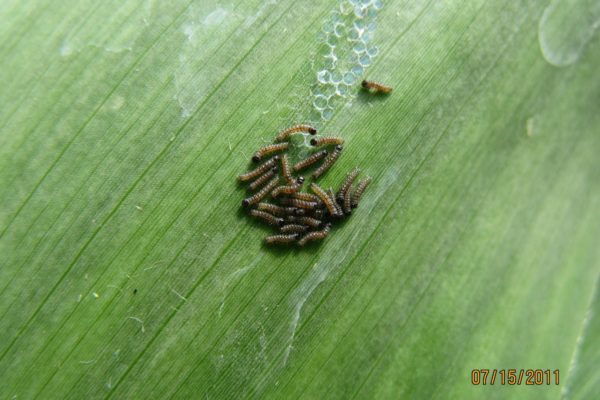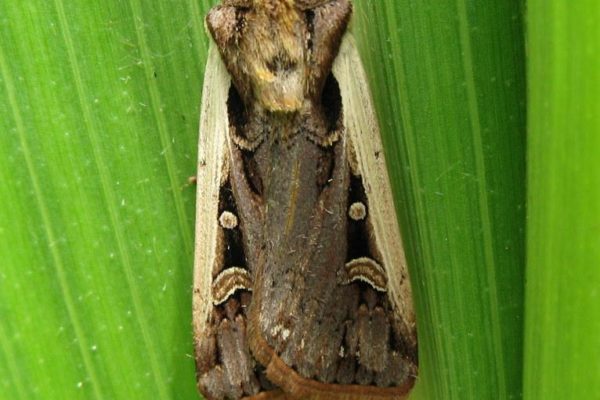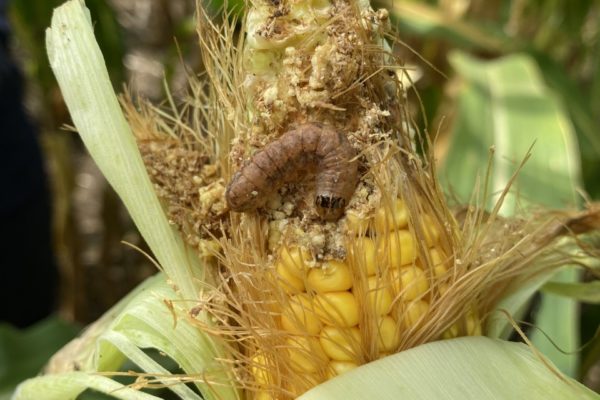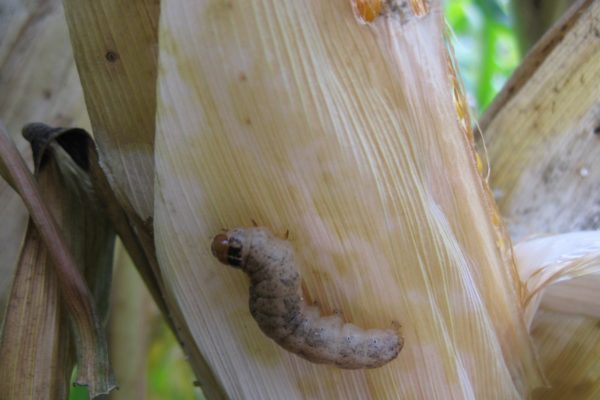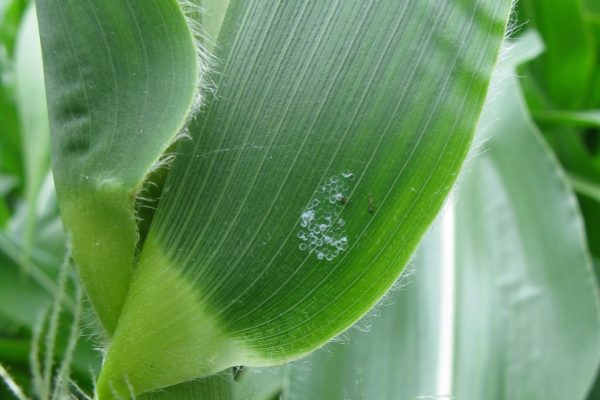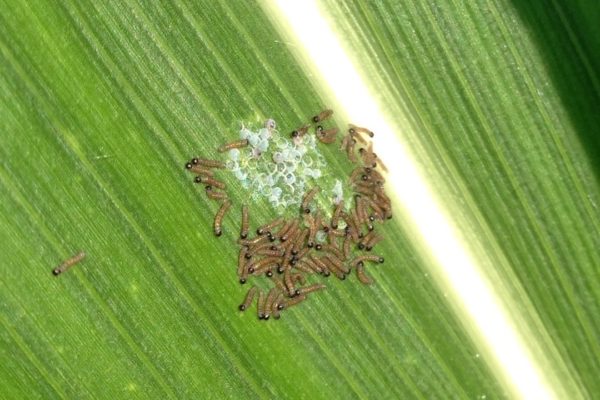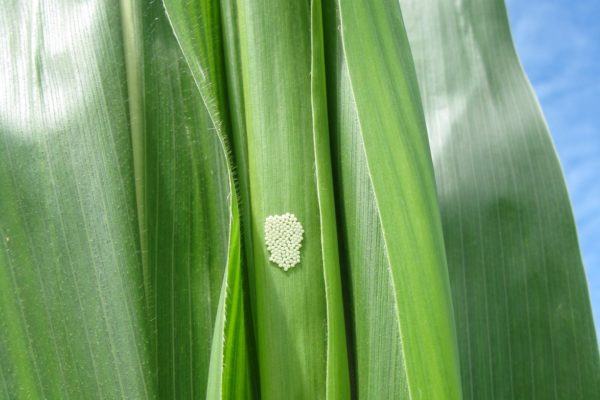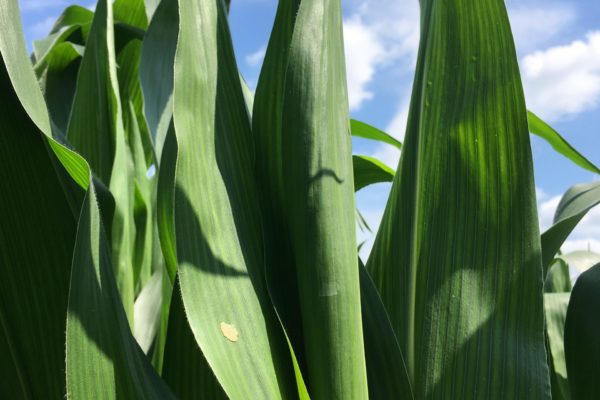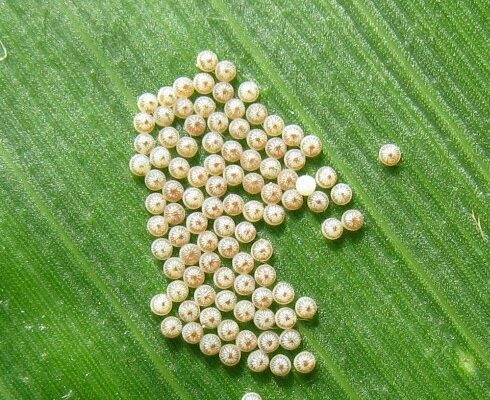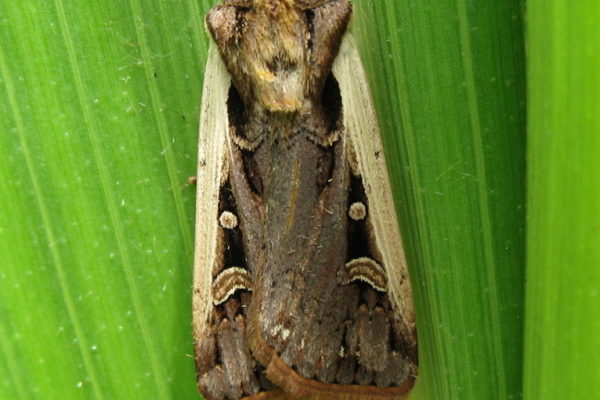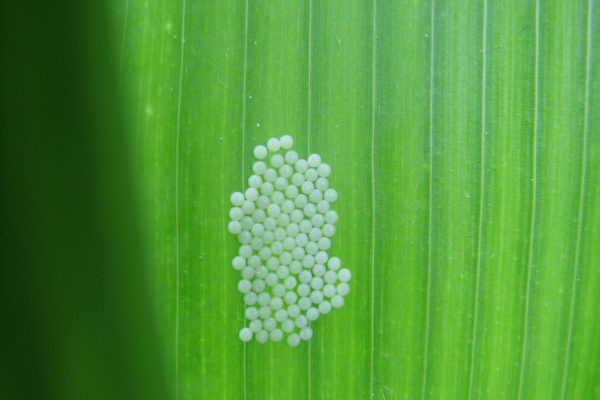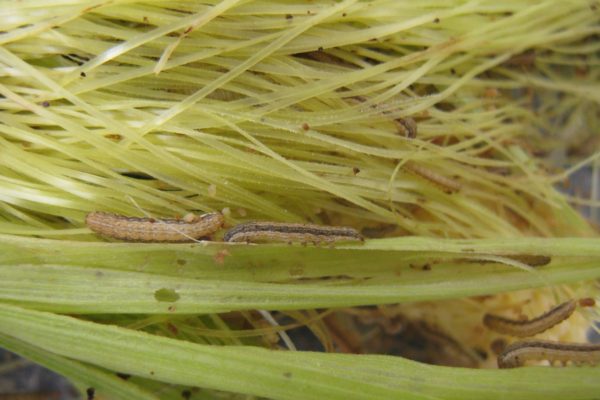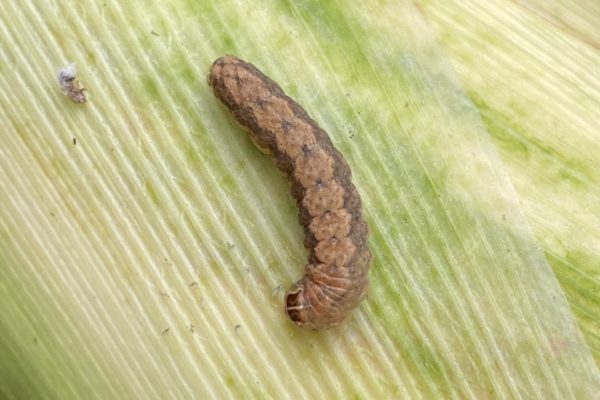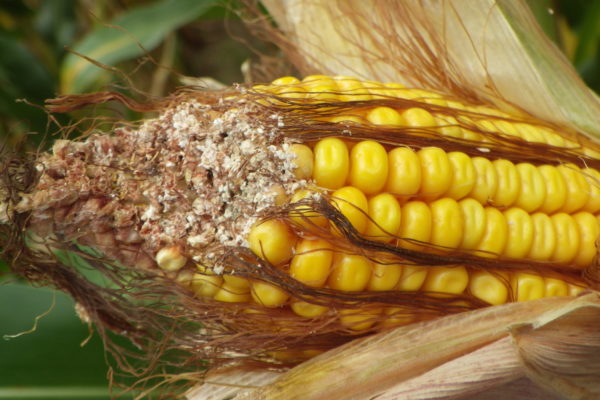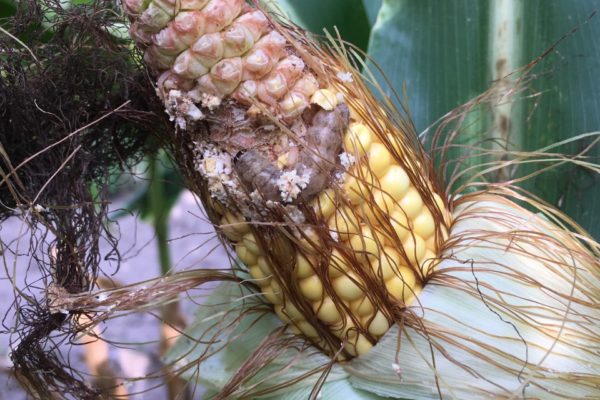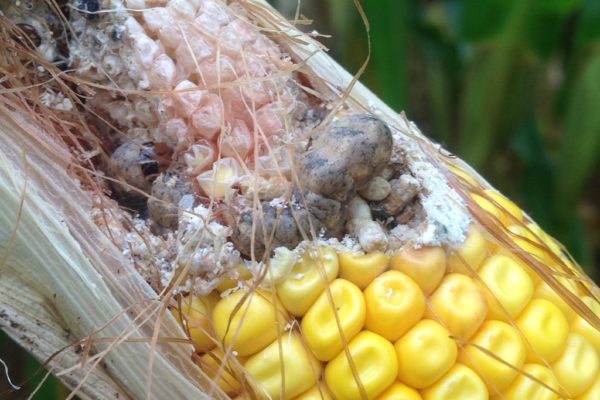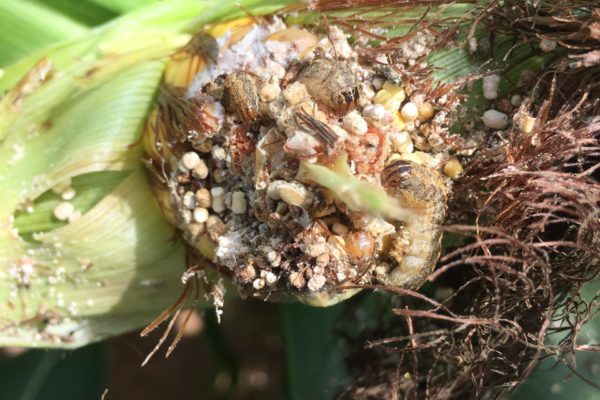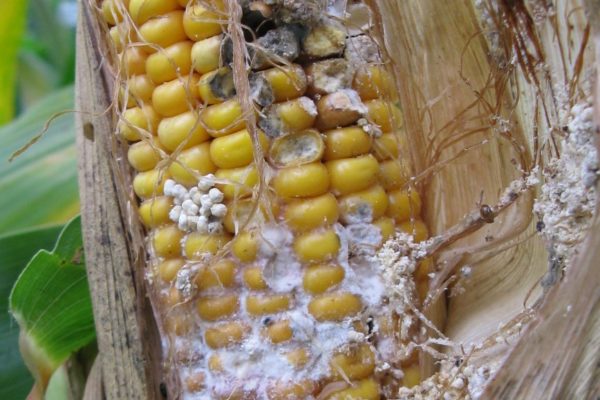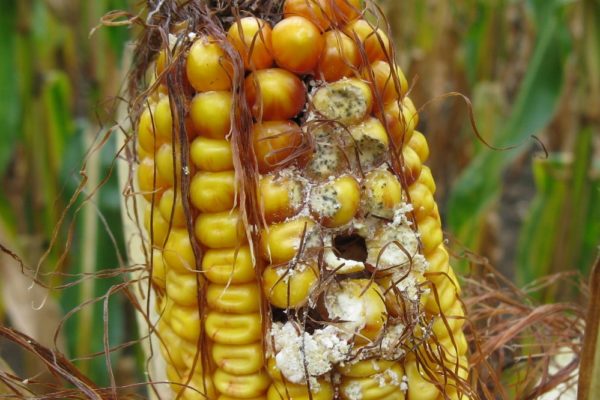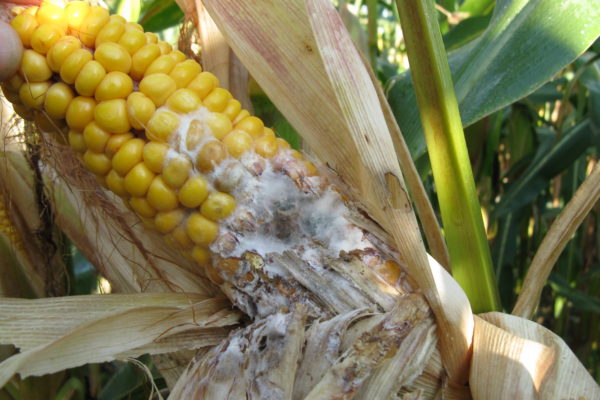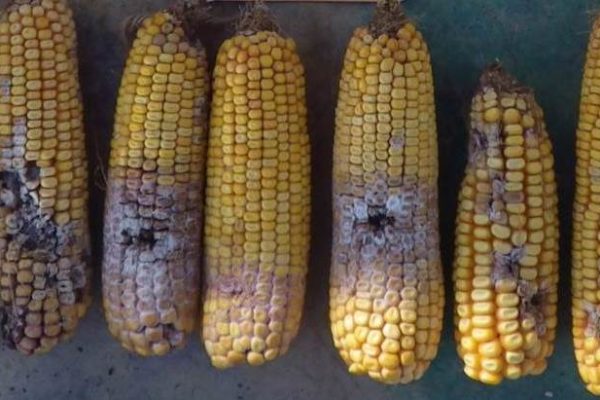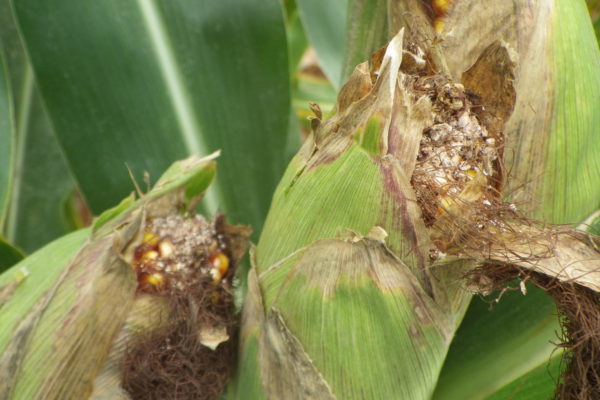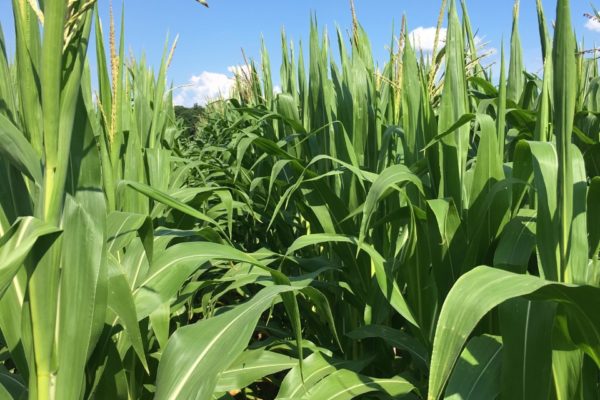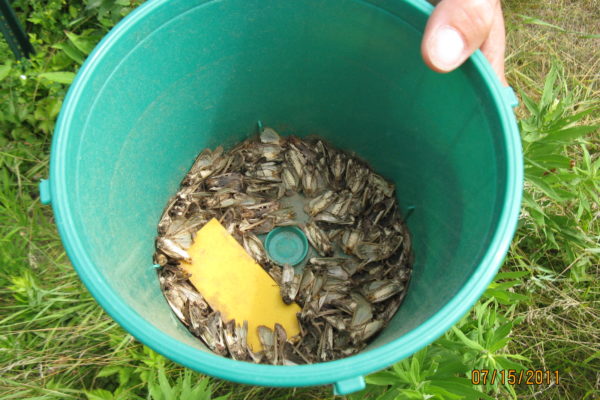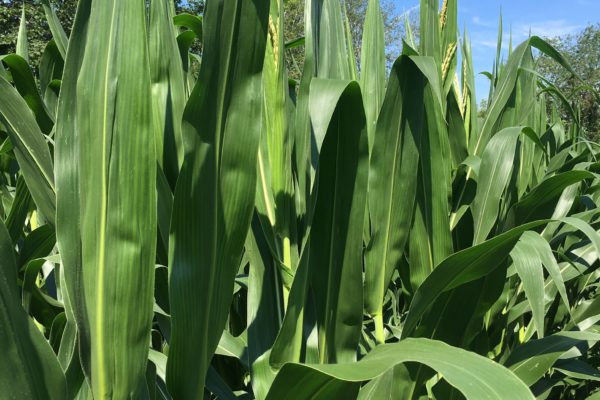Western bean cutworm (WBC), Striacosta albicosta, was first discovered in Canada in 2008. Native to the Great Plains region of the US, the distribution of WBC slowly expanded into the US Corn Belt in the early 2000’s, Ontario, Canada in 2008, and in all the Maritime Provinces since 2017. Overwintering of WBC has been documented in Ontario and Quebec.
Yield loss due to WBC has been estimated to range from 3-15 bu/ac with average infestation of one larva per plant. In Canada, WBC feeding injury is associated with increased ear mold and mycotoxin contamination of grain corn.
Identification
WBC Adult
Western bean cutworm moths are approximately 2 cm long and have a brown thorax, legs, and abdomen, with brown and tan coloured wings. The leading edge of each forewing has a tan border and the majority of the wing is brown. Just inside the tan border, there are 2 distinctive markings: a brown circle and a brown kidney bean shape, both surrounded by a tan border. The hindwings are tan in colour.
WBC Egg Masses
In corn, WBC lay their eggs in masses of approximately 50-100 eggs on the upper surface of a leaf close to the tassel. Eggs are initially white when they are laid. If they are fertilized, a brown ring will appear around the crown of the egg within 24 hours. Within a few days, the eggs will appear tan coloured and appear purple 24-48 hours before hatching. Total egg development time ranges from 5 to 7 days.
WBC Larvae
There are six instars of WBC larvae. After hatching, 1st instar larvae have a black head and purplish body. By the 2nd instar, larvae have a reddish-brown head and a tan body with subtle longitudinal stripes
After the 4th instar, larvae are identified by two dark brown longitudinal bars behind the reddish-brown head. The body lacks stripes, spots, or tubercles.
Click images above to view full image.
Life Cycle
WBC has one generation per year and overwinters in the soil as a prepupae. Pupation occurs in the spring (May) and adult moth emergence begins in late June, typically peaking in late July and early August. Moths lay their eggs in corn fields, preferably at the pre-tassel stage; however, this preference is not exclusive. Moths may lay eggs in corn after tasseling and may also lay eggs in edible dry beans.
There are six larval instars of WBC. After hatching, first instar larvae consume their eggshell, then begin to move away from the egg mass. First instar larvae typically crawl up the plant to the enclosed or emerged tassel to feed on pollen for 1-2 days then move back down to the ear zone to feed on pollen in the leaf axils and silks. Western bean cutworm larvae do not feed on corn leaves; therefore, larvae that hatch from eggs laid in vegetative stage corn will die. Third to sixth instar larvae feed on silk and kernels for the remainder of their larval stage. Kernel feeding generally begins at the ear tip; however, as larvae develop, they may move around the ear and from plant to plant, creating new entry holes in the husk on lower parts of the ear.
As the corn nears physiological maturity, the sixth instar larvae crawl out of the ears down to the soil, burrow below ground, and create an earthen cell where the dormant prepupae overwinter.
Click images above to view full image.
Injury to Corn
Signs of WBC infestation include clipped silk, feeding injury or frass near the ear tip, and holes through the husk. Estimates of yield loss from WBC range from 3-15 bu/ac with 1 larva per ear. In the Great Lakes region, the most significant risk from western bean cutworm infestation is that the feeding injury can lead to increased infection by ear mold pathogens that cause mycotoxin contamination of the grain.
Click images above to view full image.
Risk Factors
Soil type
Western bean cutworm prefers coarse-textured soils such as sand and sandy loams for overwintering.
Late-planted corn fields
After laying most of their eggs in the field that they emerged from, WBC adults may eventually move to later planted corn fields that are shedding pollen to lay more eggs. Fields in flower are the most attractive because of the strong scent the corn releases during pollination. Therefore, the latest flowering fields are at a greater risk of being infested which should be considered if being planting with corn in the following year.
Best Management Practices
Monitoring and scouting
Monitoring western bean cutworm moth flights is useful to determine the appropriate time to scout for egg masses in a region. During the growing season, pheromone trap catches are reported on the Great Lakes and Maritimes Pest Monitoring Network. Pheromone traps captures do not correlate to field infestation levels; therefore, individual fields must be scouted.
To determine if control is needed, fields should be scouted 1-2 times per week in mid-July to early August to count the number of egg masses on 20 plants in 5 areas of the field. If the cumulative count of egg masses reaches 5%, then insecticide application is warranted (OMAFRA, 2020).
Note: WBC control is only required once tassels have developed within the whorl. Larvae cannot survive on leaf tissue alone; therefore, vegetative stage corn does not need to be treated even if egg masses are present and above threshold.
Control options
- Planting transgenic corn hybrids expressing Vip3A Bt protein
- Foliar insecticide treatment of non-Vip3A corn hybrids. Registered insecticides and application recommendations may vary by province.
British Columbia: https://www2.gov.bc.ca/gov/content/industry/agriservice-bc/production-guides/vegetables/corn
Manitoba: https://www.gov.mb.ca/agriculture/crops/insects/index.html
Ontario and Maritimes Provinces: OMAFRA Crop Protection Hub
Quebec: https://www.sagepesticides.qc.ca/
Click images above to view full image.
Bt Corn Efficacy Against WBC and Resistance Status in Canada
| Effective Bt Proteins | Ineffective Bt Proteins | Bt Proteins with Known Resistance |
|---|---|---|
| Vip3A | Cry1Ab Cry1A.105 Cry2Ab2 |
Cry1F widespread in US and Canada |
